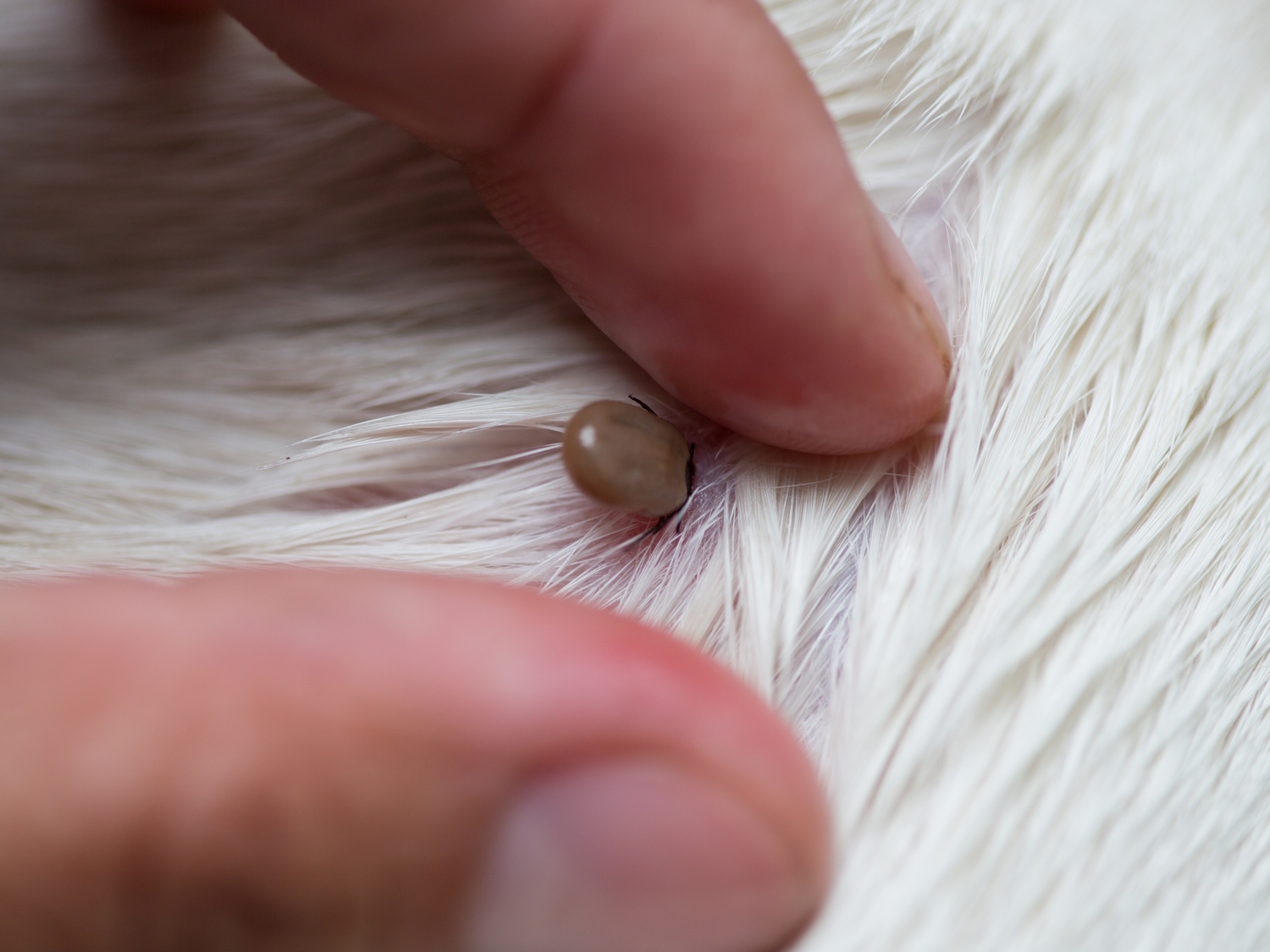
Ticks are prevalent in the UK, especially during the Spring and Autumn seasons. For dog owners, it’s essential to understand how to identify these parasites, remove them, and implement necessary preventative measures. This article will guide you through the process of dealing with ticks on dogs and provides a real-life example of a family’s experience with ticks on their pet.
What are Ticks?
Ticks are small arachnids that commonly inhabit wooded areas and are particularly active during the Spring and Autumn. These parasites sit on tall grass, ready to latch onto passing animals. In dogs, ticks often attach themselves to the legs, chest, or face, appearing as discrete dark, grey, or brownish lumps. If you look closely, you can notice tiny legs at the base of the lump.
Are Ticks Harmful to Dogs?
Ticks, while not causing immediate pain, can pose significant health risks if left untreated. These parasites latch onto your pet and feed for several days, growing from barely visible lumps to creatures around the size of your little fingernail.
Though your dog may not notice the tick due to the anti-inflammatory substance in its saliva, ticks can carry diseases, including Lyme disease. Early removal of ticks reduces the chances of disease transmission, and the best prevention method is through routine tick treatments.

How do you remove ticks from dogs?
To safely remove a tick, you will need a ‘tick twister,’ which is available at your local vet clinic, pet stores, or online. Follow these steps:
- Check the tick to ensure it’s intact, with all its legs and head visible. If not, contact your vet immediately.
- Use the tick twister to gently but firmly pull the tick out. Avoid twisting or turning the tool to prevent breaking off parts of the tick, which could lead to an infection. Slide the “claw” of the tick twister under the tick’s body. Gently twist it until the tick lets go. Don’t try to pull the tick off, as you risk leaving part of its head or mouth inside your pet’s skin.
- Once removed, examine the tick on a piece of tissue paper to ensure it’s completely intact.
- Safely dispose of the tick. Get a suitable jar or container and put the tick in before disposing of it. DO NOT squeeze the tick, as this could spread disease.
What to expect after tick removal
After the tick’s removal, the bite site might become inflamed due to the absence of the tick’s anti-inflammatory. This inflammation is usually mild, not exceeding 1cm in diameter, and often disappears over a week. If the swelling is significantly large, discharging, or painful, please consult your vet immediately.
Symptoms of tick-borne diseases can be vague and difficult to identify. If your dog appears unwell a few weeks after a tick bite, it’s crucial to inform your vet there was a tick present to ensure comprehensive investigation and treatment.
How do you prevent ticks on dogs?
Dogs are more susceptible to tick bites during spring and autumn, particularly when they explore shaded woodlands. Ticks start small but grow larger and more noticeable as they feed. Regular checking is advised if your dog frequents tick-prone areas.
Case study: Shadow the Labrador Retriever
Shadow, a 2-year-old Labrador Retriever, loves exploring local walks and finding all sorts of hidden treasures in the bushes. During a Spring holiday, Shadow and his family discovered a new woodland walk. After an afternoon of frolicking around, Shadow returned home, proudly showing off various items he found on his adventure.
Shadow’s face and front legs developed several lumps resembling pale sweetcorn kernels several days later. After a video consultation with Vets Now, Shadow’s family learned that these lumps were ticks that had attached to Shadow during his woodland adventure and had grown to their current size.
Shadow’s local vet removed the ticks the following day. Since Shadow loves his woodland runs and it is tick season, his family now ensures he receives routine tick prevention. They’ve also purchased a tick remover – a little plastic crowbar-like tool – and added it to Shadow’s canine first aid kit, preparing for any future encounters with ticks.
Regularly check your dog for ticks
Understanding ticks, their potential harm, and how to remove them safely can help dog owners like Shadow’s family keep their pets safe and tick-free. Regularly check your dog for ticks, especially after outdoor activities in tick-prone areas, and keep up with routine prevention treatments as your vet prescribes.
Remember, ticks should be removed with proper tools to avoid leaving parts in your pet that could cause further complications. If you need clarification on any tick removal or prevention aspect, feel free to seek professional advice from your vet.
With the right knowledge and tools, you can ensure your dog’s health and happiness, ready for their next outdoor adventure.

